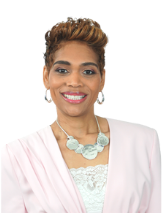
OCTOBER 17, 2023
The Dominant Culture Remains Largely Unaware
The truth is that most people in the dominant culture (which in the workplace is mostly White males) are unaware of the huge benefits they have and the huge disadvantages that people who are not from the dominant culture face every day.
Here is just one example from my work as a DEIB consultant, coach, and trainer.
Two young men joined an organization at about the same time. They had the same level of education, were the same age, and were hired for the same job as a middle manager. The only difference was that one is White and one is Black.
Even though they are culturally different – dressing differently, speaking differently, and interested in different things – they became work friends.
It didn’t take long for the Black manager to realize the two were treated very differently. His friend was invited to after-hour socials with handshakes and pats on the back. He easily found a mentor.
The Black manager found himself working longer days than his friend, trying to figure out on his own how to navigate the many misunderstandings, miscommunications, and “mistakes” he was said to have made.
His White friend did not notice how he had been given training opportunities, while the Black manager was given a performance improvement plan.
While the White manager was promoted after the first year, the young Black man didn’t receive his first promotion until he had been with the organization for three years.
Because the young White man was part of the dominant culture, he was “automatically” given access to opportunities, given a pass more often, and was invested in.
If the first objective of DEIB programs is to raise awareness of inequities like these, so they can be brought into the consciousness of people who have privilege.
When done well, DEIB helps people of the dominant culture see that they tend to exercise their power to lift up people who look like themselves but don’t do it as often for people who don’t.
From my experience, most people in the dominant culture are good-willed. They want to lift up people who don’t look like them, but either don’t see the inequity or don’t know how.
Yes, there are racist people in the workplace, but from my experience, they are few and far between. The problem is that most of us are simply unaware of our blind spots.
When shown how inequities impact their co-workers, most people in the dominant culture do come to realize that they have advantages just by being an insider of the dominant culture and that people outside the dominant culture are at a significant disadvantage.
And yes, this awareness also needs to be gained by under-represented and disadvantaged people as well.
If you’re struggling with creating an equitable culture where everyone can bring their best selves to work, check out our DEIB training or contact us.
Organization At Its Best Founder and Chief Executive Officer, Tawana Bhagwat, has more than twenty-five years of experience directing Human Resource administration, change management, learning and development, facilitation, DEIB, and executive coaching.

